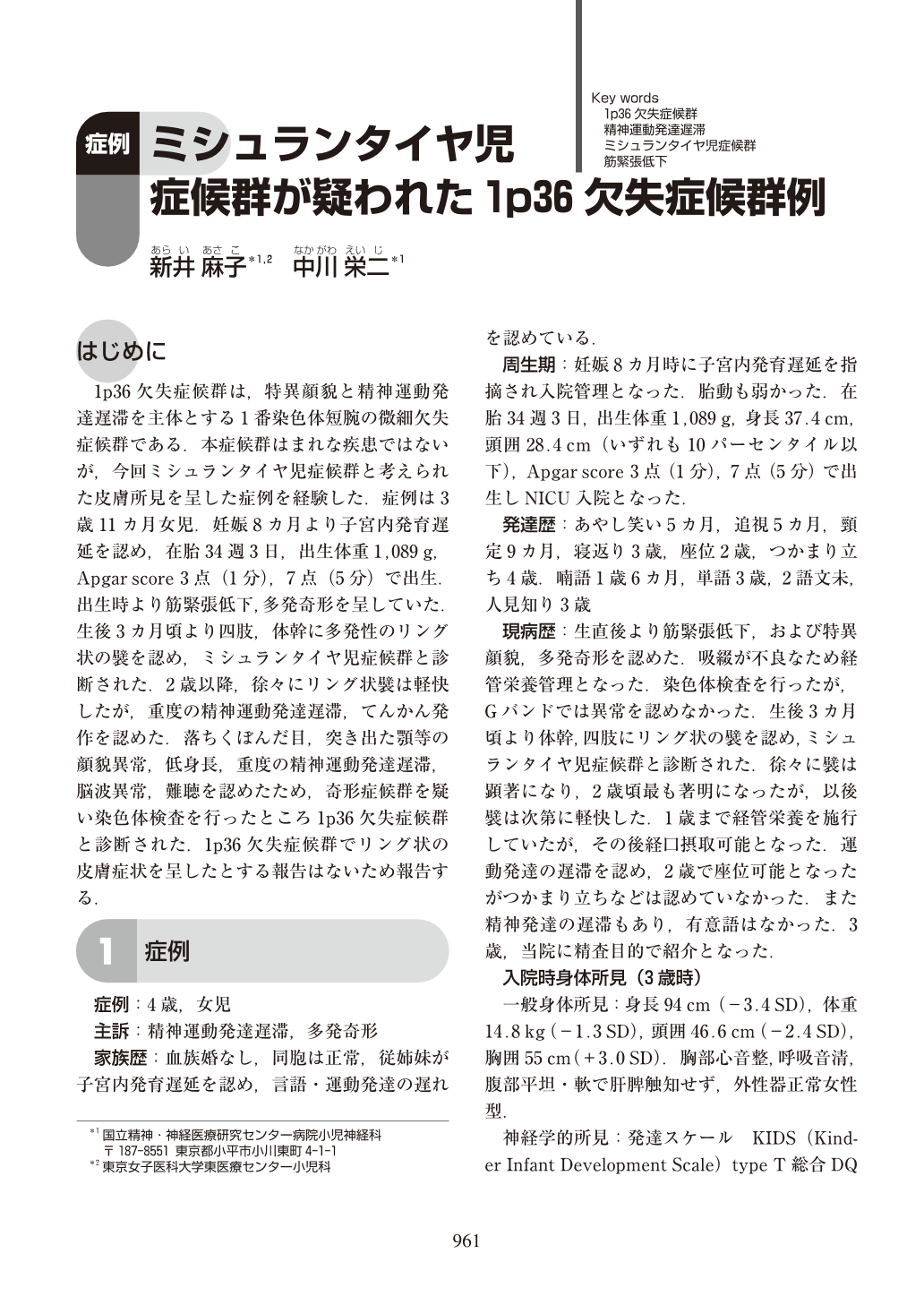4 0 0 0 ミシュランタイヤ児症候群が疑われた1p36欠失症候群例
症例は4歳女児で、生直後より筋緊張低下、および特異顔貌多発奇形を認めた。吸綴が不良なため経管栄養管理となった。生後3ヵ月頃より体幹、四肢にリング状の襞を認め、ミシュランタイヤ児症候群と診断した。徐々に襞は顕著になり、2歳頃最も著明になったが、以後次第に軽快した。1歳まで経管栄養を施行したが、その後経口摂取可能となった。運動発達の遅滞を認め、2歳で座位可能となったが、つかまり立ちなどは認めていなかった。また精神発達の遅滞もあり、有意語はなかった。FISH解析を行ったところ、46,XX,ish del(1)(p36.3)(D1Z2-)と染色体異常を認め、1p36欠失症候群と確定診断した。4歳時に朝食中に突然無呼吸、チアノーゼが出現、脳波検査にて両側後頭部に高振幅徐波、右前頭・中心部に棘波を認めた。てんかんによる無呼吸と診断し、抗てんかん薬内服となった。4歳になり、つかまり立ち、伝い歩きを認めるようになったが、有意語は出現していない。
1 0 0 0 OA 乳児型Tay-Sachs病の頭部MRIの経時的変化
- 著者
- 數間 貴紀 新井 麻子 大谷 智子 老谷 嘉樹 鈴木 恵子 松永 保
- 出版者
- 東京女子医科大学学会
- 雑誌
- 東京女子医科大学雑誌 (ISSN:00409022)
- 巻号頁・発行日
- vol.93, no.2, pp.67-72, 2023-04-25 (Released:2023-04-25)
- 参考文献数
- 10
Tay-Sachs disease involves accumulation of GM2 gangliosides in lysosomes due to a metabolic disorder of brain-abundant gangliosides. In the infantile type, death typically occurs by 3 years of age. We report brain magnetic resonance imaging (MRI) abnormalities in a case of infantile Tay-Sachs disease. The 8-month-old patient had development delay and began regression at 1 year of age. A cherry-red fundus spot and low β-hexosaminidase A (Hex A) levels in leukocytes indicated GM2 gangliosidosis. Gene analysis identified homozygous pathogenic variants in the HEXA gene, leading to Tay-Sachs disease diagnosis.At 10 months of age, brain MRI showed age-appropriate myelination. At 1 year 9 months, T2-weighted imaging showed high intensity in the subcortical white matter, with delayed myelination. At 2 years 4 months, the cerebral white matter, putamen, caudate nucleus, thalami (except ventral), middle cerebellar peduncle, and dentate nucleus showed high intensity on T2-weighted imaging. At 5 years 8 months, cerebral and basal ganglia atrophy was observed. The caudate nucleus and putamen showed high intensity on T1-weighted images and low intensity on T2-weighted images. Unlike typical infantile Tay-Sachs characteristics, higher Hex A activity in this case probably contributed to a milder phenotype and myelination acquisition during infancy.
